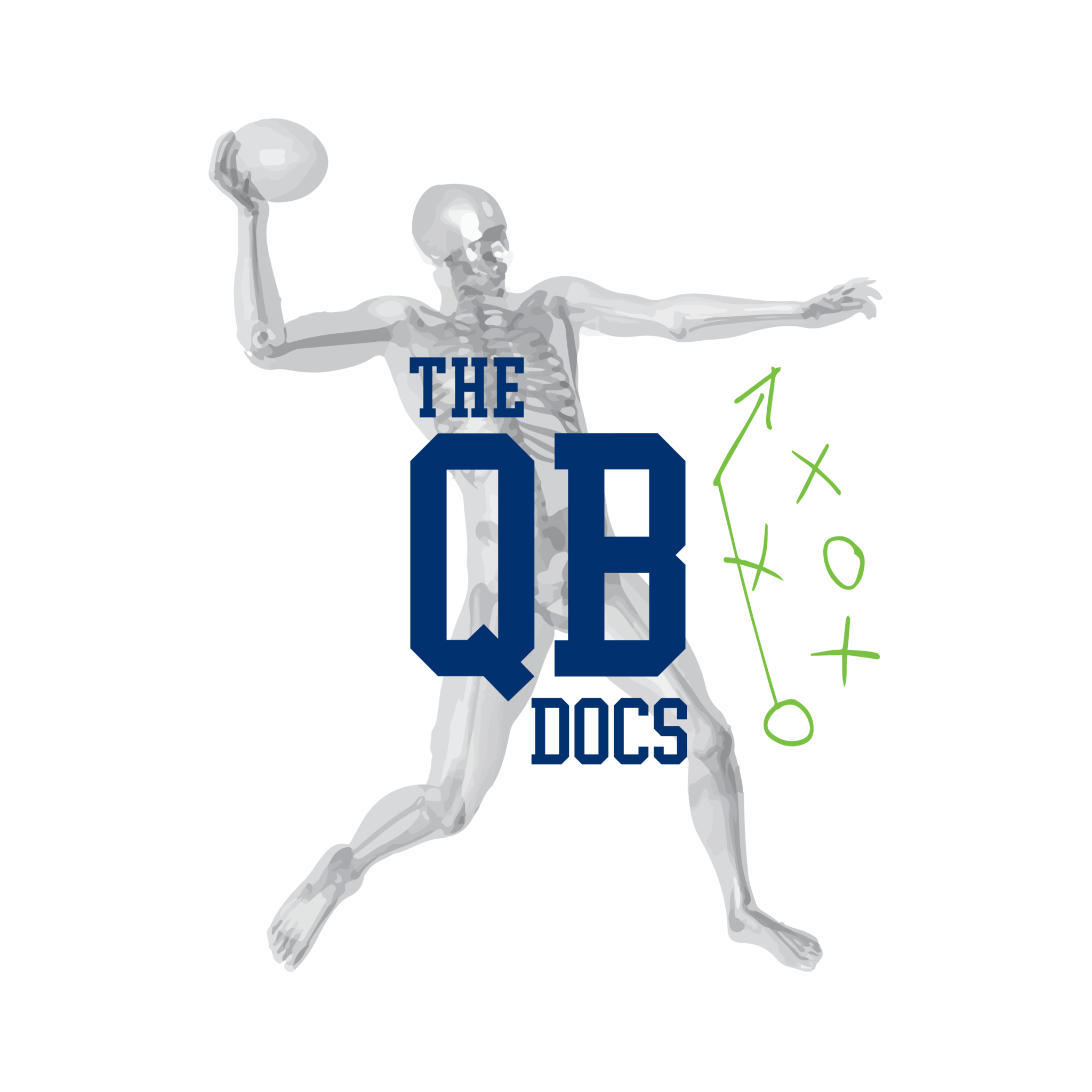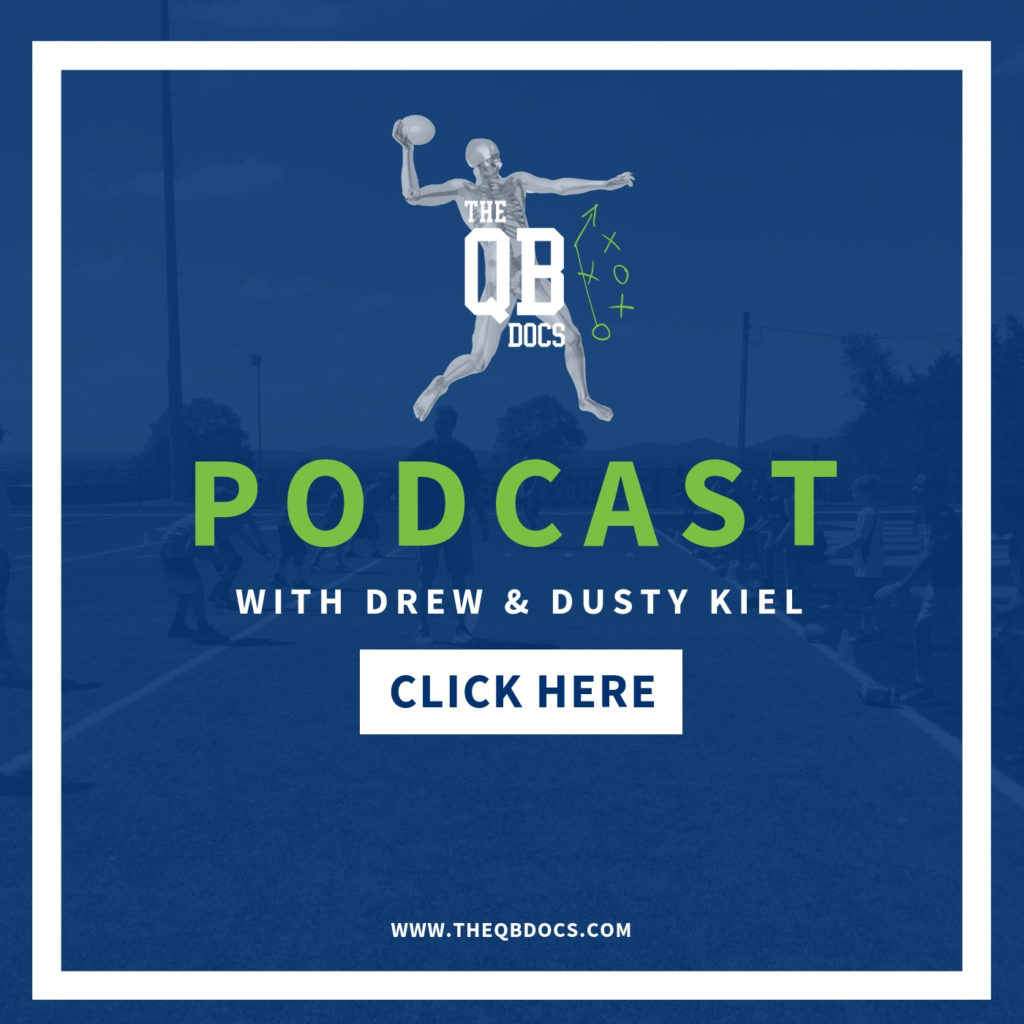Week 1 of the football season is now over and we are getting many questions on what a quarterback’s training program should look like during the course of the season. That’s a tricky question in our minds because there are a lot of variables involved. We would want to ask questions such as “how does your body feel?”, “do you have aches and pains anywhere?”, “how has your sleep been?”, and “how has your nutrition been?” The environment changes during the course of the season for the player so the program needs be tailored up or tailored down based on a lot of these subjective and objective measures. Today, we will discuss what an in season program looks like in our minds!
Volume
Any good strength and conditioning program out there is going to decrease the amount of volume (total work) that is done during the course of the season. Please understand that this doesn’t mean that we are decreasing the amount of weight that we want our athletes to use. This would be the “intensity” of the workload. Volume and intensity go hand in hand when writing programs. During the season, we would want low volume and high intensity. Let me break this down for you.
Let’s talk about the squat because that is a staple in any strength and conditioning program. Let’s say that the sets were 5×6 to end the course of the Summer strength and conditioning program. Now, with the transition to the season, we would want to lower the total volume while also keeping the intensity high to try and maintain as much strength as possible during the season. Notice that I didn’t say BUILD strength, we are trying to MAINTAIN strength. Instead of 5×6, it might now be 3×4 for the working sets. It’s inevitable that players are going to get banged up. During the season, the weight room’s job is to maintain the progress that has been made to that point, while also keeping these guys healthy. Let me emphasize the word healthy!
Specificity
Any good program is also going to consist of making sure that it includes exercises that are going to counteract any asymmetries that are present for the quarterback. There’s always going to be some asymmetry because the quarterback is a unilateral, rotational athlete. But, if there’s too much asymmetry, then this will lead to overuse injuries and inefficiency in the play of the quarterback. Some examples would be performing opposite side rotational med ball throws (left sided rotation for right handed quarterbacks), left side planks, right hip internal rotation range of motion, and right shoulder internal rotation range of motion.
Specificity is also very important in understanding how to work around certain injuries, but get the same result in the weight room. For example, let’s say that a quarterback is having some issues with shoulder impingement on the right shoulder. This is very common in quarterbacks. Whenever that player gets under the bar to perform a back squat it irritates the tendon that is inflamed, therefore prolonging the recovery process and decreasing the performance of the quarterback. A replacement exercise could be the goblet squat with a heavier weight, a trap bar deadlift, or a kettle bell RDL. There’s ALWAYS replacement exercises for players that have injuries!
Recovery
The environmental factors that surround the player are often times the most important part of the equation when it comes to performance. We understand that it becomes very challenging when players are asked to go to school, travel for games, participate in games, and also try to have a social life. If players care about their craft, they will get these environmental factors dialed in and create a routine that suits their individual needs. There’s 4 areas that we want to focus on when players are in season. These are sleep, nutrition, mindfulness, and hydration. We have gone in depth about all of these before, but we want to bring up some factors that affect the player specifically when they are in season.
Plan, Plan, Plan
Depending on what level you play at, a player’s schedule will change based off of that. Since the intensity of exercise being elevated due to practice and playing in games every day, it is important that the player is never in an energy deficit. You would be amazed with how many athletes are in this deficit during the season which decreases the ability to think, perform on the field, and also maintain the gains that were made during the off season. Make sure you are eating a lot and eating a good foundational base of food. (Vegetables, fruits, lean meats, a variety of fats). This means that it is on the player to plan out what their schedule looks like during the course of the week and realize when it is going to be tough to eat enough food during the week. This could be because of travel, practice schedule, etc. Don’t skip meals and get your snacks.
Don’t Skip Sleep
Quite possibly the dumbest quote I’ve ever heard is that “I’ll sleep when I die.” Well, if you don’t sleep well then you definitely aren’t getting the most out of your performance. The issue that we see is that during the course of the season, players have a tendency to lose sleep because of a variety of reasons. This could be that anxiety is keeping them up at night, they are staying up late to balance the demands of school and sport, or social events are keeping them up later than they should be up. Some of this is inevitable, but realize that if you are sleeping less than 7 hours of sleep, you are most definitely not getting the most out of your performance. Below is a podcast that we did on sleep where we go over the top tips to get the most out of your sleep at night for peak performance.
High Performance
Success on the field is often determined by what you are doing off of the field. There are very few players that have the genetic potential to play at a high level at all times while also eating poorly and sleeping poorly over a long amount of time. I say there are few because we have seen a couple of these guys. For the rest of us, it takes mindfulness in what we do every single day. This is especially true during the course of the season as player’s bodies start to break down. Be the best that you can be on and off the field this season for the WHOLE season. We are excited to see the success of the players out there that are willing to take this holistic approach this season. Please feel free to reach out if there are any questions or you would like to start your journey in working with us.
Drew Kiel PT, DPT, CSCS


